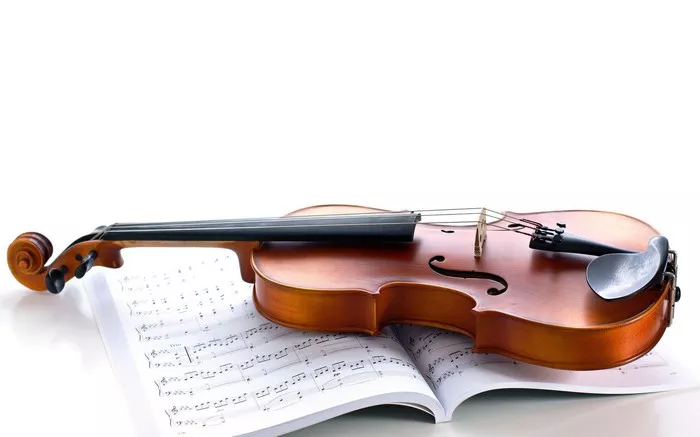The pursuit of a beautiful tone is a fundamental aspect of learning to play the violin. The instrument’s expressive capabilities shine through the nuances of its sound, making tone production a key focus for violinists at all levels. In this article, we will explore the various techniques and practices that can help you achieve a good tone on the violin.
Understanding the Elements of Good Tone
Before delving into the techniques, it’s crucial to grasp the components that contribute to a beautiful tone on the violin:
1. Bow Control: The way the bow is drawn across the strings greatly influences the tone. The speed, pressure, angle, and contact point are essential aspects of bow control.
2. Left Hand Technique: Proper left-hand placement and finger pressure are pivotal for intonation, which is closely tied to tone quality. The left hand must be relaxed, and fingers must be appropriately positioned to produce clean, in-tune notes.
3. Resonance and Sound Production: The violin’s body and the quality of its construction significantly affect the sound produced. Learning to draw out the instrument’s resonance is essential for tone production.
4. Phrasing and Dynamics: Expressiveness in music is achieved through dynamic variations and phrasing. Controlling the intensity and subtlety of your playing contributes to a beautiful tone.
Bow Control: The Heart of Tone Production
The bow is the violinist’s primary tool for sound production, and mastering bow control is essential for achieving a beautiful tone. Here are some tips to help you improve your bow control:
1. Bow Placement: Experiment with bow placement on the strings. Playing closer to the bridge creates a brighter, more focused sound, while playing closer to the fingerboard produces a warmer, softer tone.
2. Bow Speed: Vary your bow speed to explore different tonal colors. A slow bow produces a richer, warmer tone, while a faster bow creates a brighter, more brilliant sound.
3. Bow Pressure: Adjust the pressure of your bow on the strings. Light pressure produces a delicate, ethereal sound, while heavier pressure yields a robust and full tone.
4. Sustained Bowing: Practice long, sustained bows to develop control over your bowing arm. Focus on maintaining an even tone and volume throughout the length of the bow stroke.
5. Bow Distribution: Be mindful of the even distribution of the bow on the string. Avoid excessive tilting of the bow, which can create an undesirable sound.
6 .Bow Strokes: Work on various bow strokes, including legato, staccato, and spiccato. These techniques help you achieve different tonal effects.
Left Hand Technique and Intonation
The left hand’s role in producing a good tone on the violin cannot be overstated. Correct left-hand technique and precise intonation are fundamental to tone quality. Here’s how you can improve your left-hand technique:
1. Hand and Finger Placement: Maintain a relaxed and curved hand shape. The fingers should land on the strings with the tips, not the pads. Proper finger placement ensures clean, in-tune notes.
2. Finger Pressure: Apply just enough finger pressure to create a clean, clear sound. Excessive pressure can result in a harsh, squeezed tone, while too little pressure leads to weak, airy notes.
3 .Vibrato: Vibrato is a technique that adds depth and expressiveness to your tone. Practice various vibrato speeds and amplitudes to develop control over this essential technique.
4. Shifts and Slides: Execute shifts and slides smoothly. These movements should be controlled and precise to maintain the quality of your tone.
5. Double Stops and Chords: Practice double stops and chords to improve your left-hand coordination. Playing multiple notes simultaneously helps develop finger independence.
Resonance and Sound Production
The resonance of the violin is a key factor in achieving a beautiful tone. Here’s how to enhance your instrument’s resonance:
1. Quality Instrument Setup: Ensure that your violin is properly set up, with well-fitted soundposts, bridges, and strings. A well-maintained instrument will produce a better tone.
2. Proper Bow Placement: As mentioned earlier, bow placement on the strings plays a vital role in sound production. Experiment with bow placement to discover your instrument’s resonant spots.
3. Bow-String Contact: Pay attention to the quality of contact between the bow and the strings. Aim for consistent and even contact to produce a rich, resonant tone.
4. Bow-Pressure Balance: Maintain a balance between bow pressure and bow speed. This balance allows you to draw out the violin’s natural resonance.
5 .Bowing Techniques: Experiment with different bowing techniques, such as sul tasto (over the fingerboard) and sul ponticello (over the bridge), to explore unique tonal colors and enhance resonance.
Phrasing and Dynamics
Expressiveness in music is closely tied to how you shape phrases and employ dynamics. Here are some tips to enhance your phrasing and dynamics for a beautiful tone:
1. Dynamic Contrasts: Explore dynamic contrasts, varying from pianissimo to fortissimo. Practice gradual crescendos and diminuendos to infuse emotion into your playing.
2. Articulation: Pay attention to articulation and use techniques like legato and staccato to shape your musical phrases.
3. Use of Vibrato: Incorporate vibrato strategically to add warmth and expression to your tone. The speed and width of vibrato can convey different emotional nuances.
4. Breathing and Phrasing: Mimic the natural ebb and flow of human breath in your playing. This organic approach to phrasing can add a lyrical quality to your tone.
5. Listening and Interpretation: Listen to great violinists and study their interpretations. Analyze how they use dynamics and phrasing to create beautiful tones in their performances.
See Also: The Violin in a Worship Band: A Guide to Musical Ministry
In conclusion
Achieving a beautiful tone on the violin is a lifelong journey. It requires continuous exploration, practice, and refinement of your bowing and left-hand techniques. Additionally, a well-maintained instrument and a keen understanding of the elements that contribute to good tone are essential. Embrace the violin as a vehicle for self-expression and musical storytelling, and your dedication to mastering tone production will pay off, allowing you to create the captivating and evocative music that this instrument is known for.


